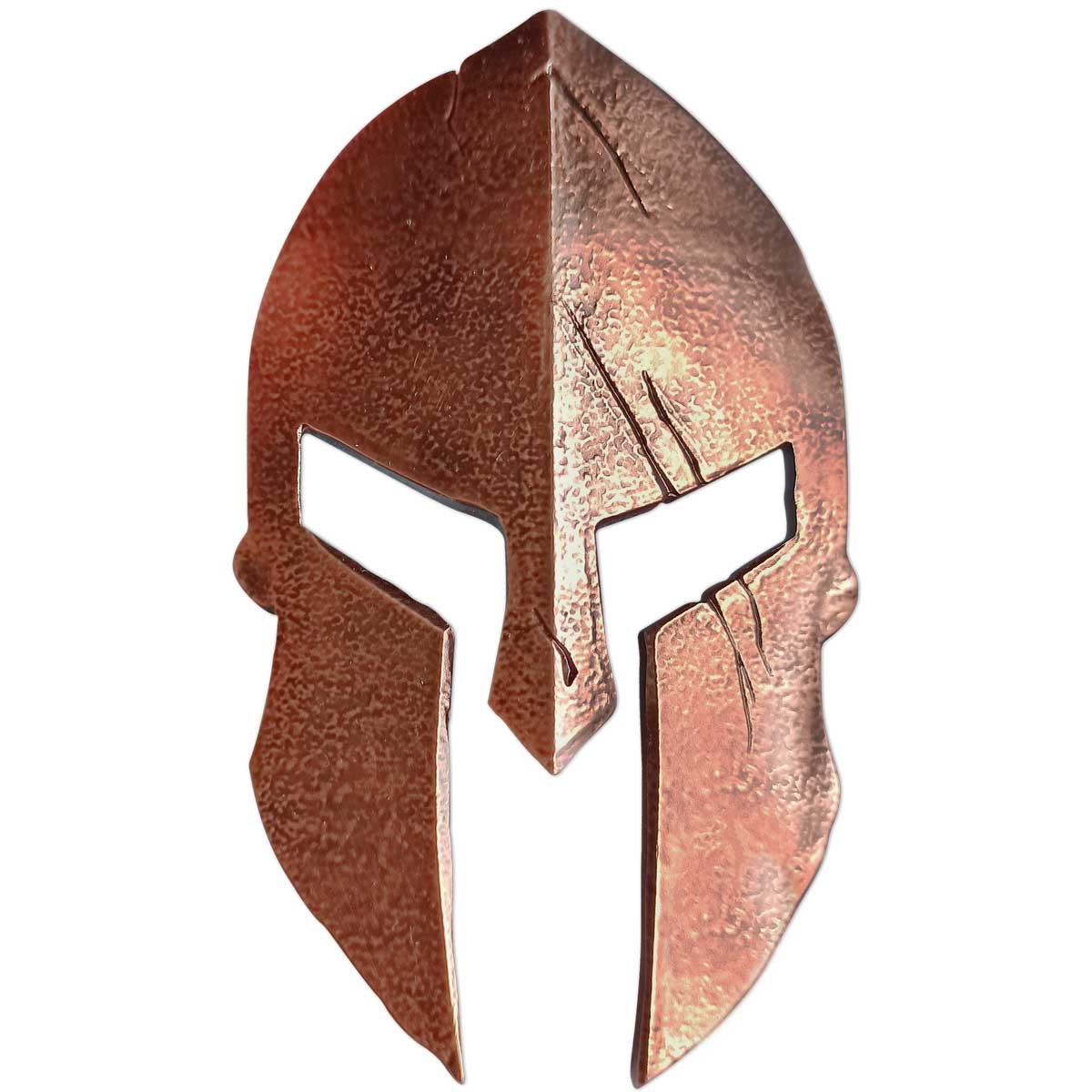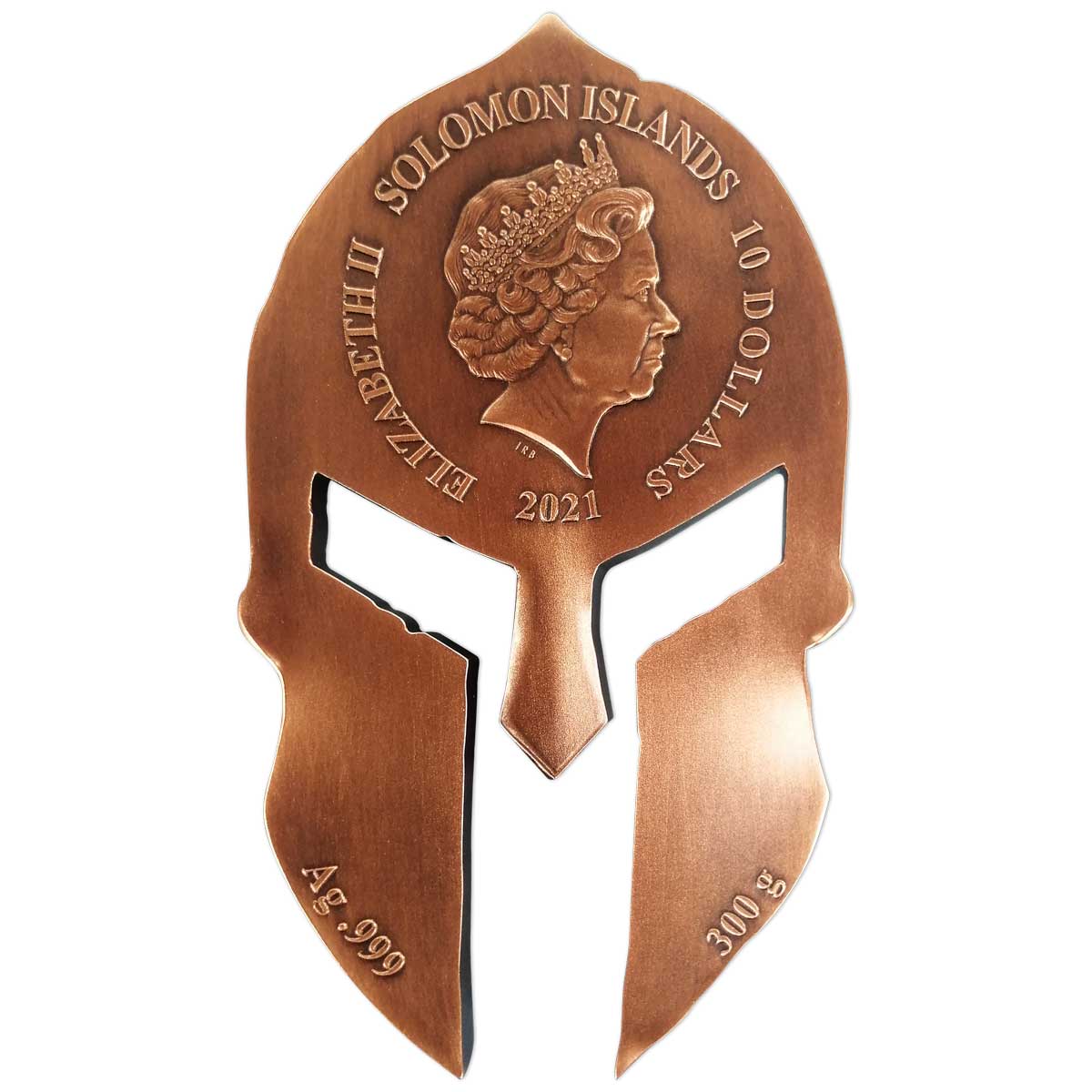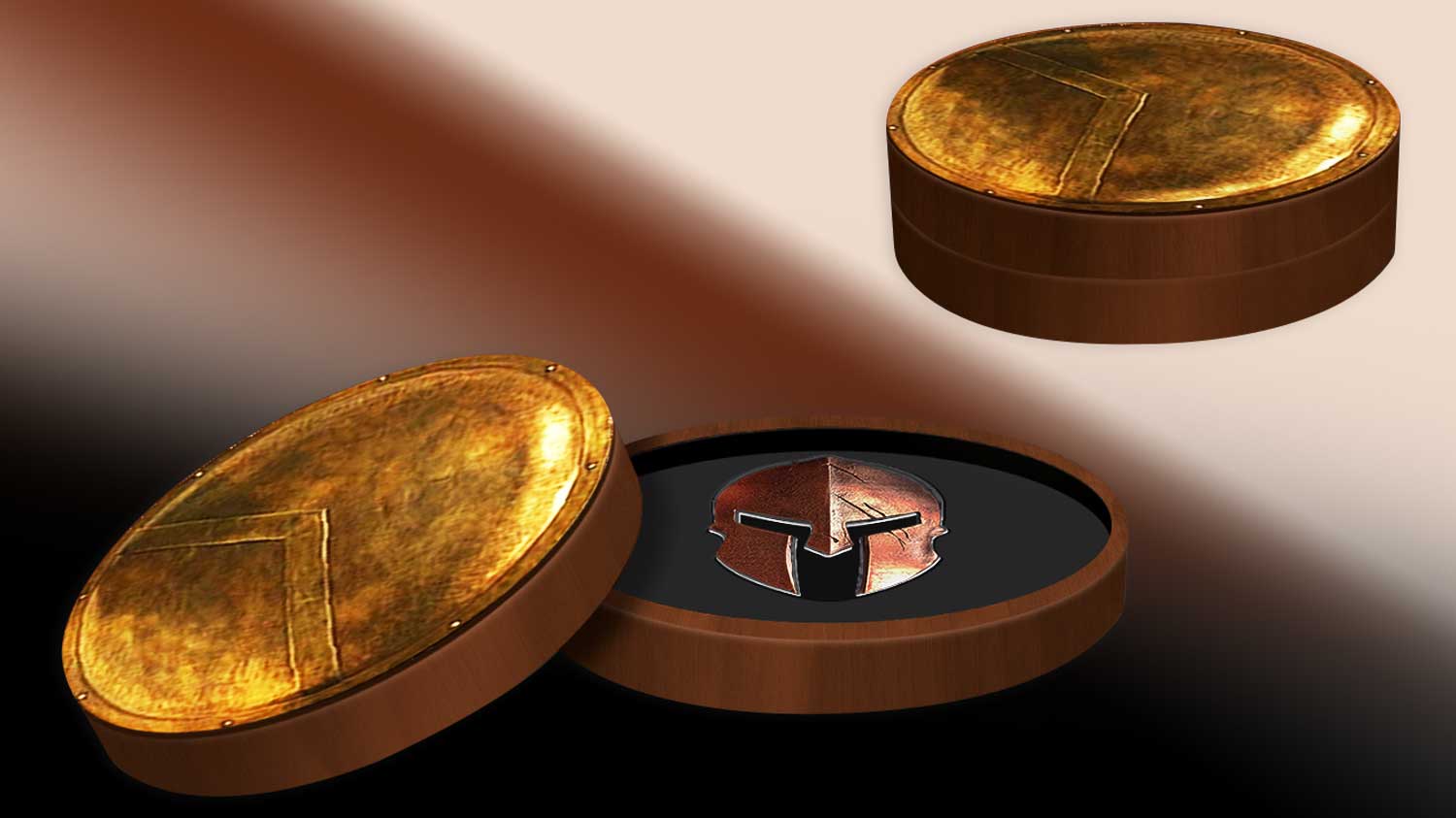None shall pass! Legendary Spartan warriors helmet is brought to numismatic life with MDM’s new shaped silver coin
Who doesn’t love the Spartans? Nobody should really. A quite distorted society, a rabid superiority complex and a negative influence on peace in the Greek region, Sparta nevertheless deserves respect for its single-minded pursuit of excellence in the field of warfare. We’ve all heard the story, however embellished, of the 300 Spartans that held back an empire at Thermopylae, and that’s just one of many tales of bravery, even widely known today with the aid of blockbuster movies like Zack Snyder and Frank Millers striking ‘300’ from a few years ago.
One of the most distinctive elements of this Greek city-state was the helmet worn by the Spartan Hoplites in battle. Similar to the more popular Corinthian Helmet, named after the city-state of Corinth, the Spartan Helmet was in use around 400 BCE and had the same longer nose guard and pointed cheek guards. It differed in losing the fancy plumes, to be replaced by one formed in the same material as the rest of the helmet, usually bronze. These became larger, more elaborate and highly decorated as time passed.
MDM have done what looks to be a terrific job reproducing one of the many variations of the Spartan helmet, choosing one that perhaps fans of the movie ‘300’ might recognise. This is a fully shaped coin, abandoning any pretence of staying broadly circular for a custom look, but well textured with that handmade, battle-damaged look. Standing an impressive 110 mm in height and covered in an antique-bronze finish, it looks a perfect item for the history buff.
Staying with the 300 motif, MDM have used exactly 300 grams of 0.999 silver for this one, and have also kept the mintage to the same number. Even the coin box follows the same stylised look, with the famous ‘Lambda’ (for Laconia) symbol on it, no doubt to carry on with the armour look by replicating a shield. Now obviously, this isn’t a bargain basement issue, with prices around the €700 mark, but there’s plenty of room in the marketplace for low mintage, but high ambition issues, so we’re all for it. A coin we’re sure the fan of ancient history would love to find a place for. Available to order now.
SPARTA AND THE SPARTANS
Sparta was a prominent city-state in ancient Greece. In antiquity the city-state was known as Lacedaemon, while the name Sparta referred to its main settlement on the banks of the Eurotas River in Laconia, in south-eastern Peloponnese. Around 650 BC, it rose to become the dominant military land-power in ancient Greece.
Given its military pre-eminence, Sparta was recognized as the overall leader of the combined Greek forces during the Greco-Persian Wars. Between 431 and 404 BC, Sparta was the principal enemy of Athens during the Peloponnesian War, from which it emerged victorious, though at a great cost of lives lost. Sparta’s defeat by Thebes in the Battle of Leuctra in 371 BC ended Sparta’s prominent role in Greece. However, it maintained its political independence until the Roman conquest of Greece in 146 BC. It then underwent a long period of decline, especially in the Middle Ages, when many Spartans moved to live in Mystras. Modern Sparta is the capital of the Greek regional unit of Laconia and a center for the processing of goods such as citrus and olives.
Sparta was unique in ancient Greece for its social system and constitution, which completely focused on military training and excellence. Its inhabitants were classified as Spartiates (Spartan citizens, who enjoyed full rights), mothakes (non-Spartan free men raised as Spartans), perioikoi (freedmen), and helots (state-owned serfs, enslaved non-Spartan local population). Spartiates underwent the rigorous agoge training and education regimen, and Spartan phalanges were widely considered to be among the best in battle. Spartan women enjoyed considerably more rights and equality to men than elsewhere in the classical world.
At its peak around 500 BC the size of the city would have been some 20,000 – 35,000 free residents, plus numerous helots and perioikoi (“dwellers around”). At 40,000 – 50,000 it was one of the largest Greek cities; however, according to Thucydides, the population of Athens in 431 BC was 360,000 – 610,000, making it unlikely that Athens was smaller than Sparta in 5th century BC. (Source: Wikipedia)
| SPECIFICATION | |
| DENOMINATION | $10 Solomon Islands |
| COMPOSITION | 0.999 silver |
| WEIGHT | 300 grams |
| DIMENSIONS | 63.5 x 110.0 mm |
| FINISH | Antique bronze |
| MODIFICATIONS | Shaped |
| MINTAGE | 300 |
| BOX / C.O.A. | Yes / Yes |





Leave A Comment